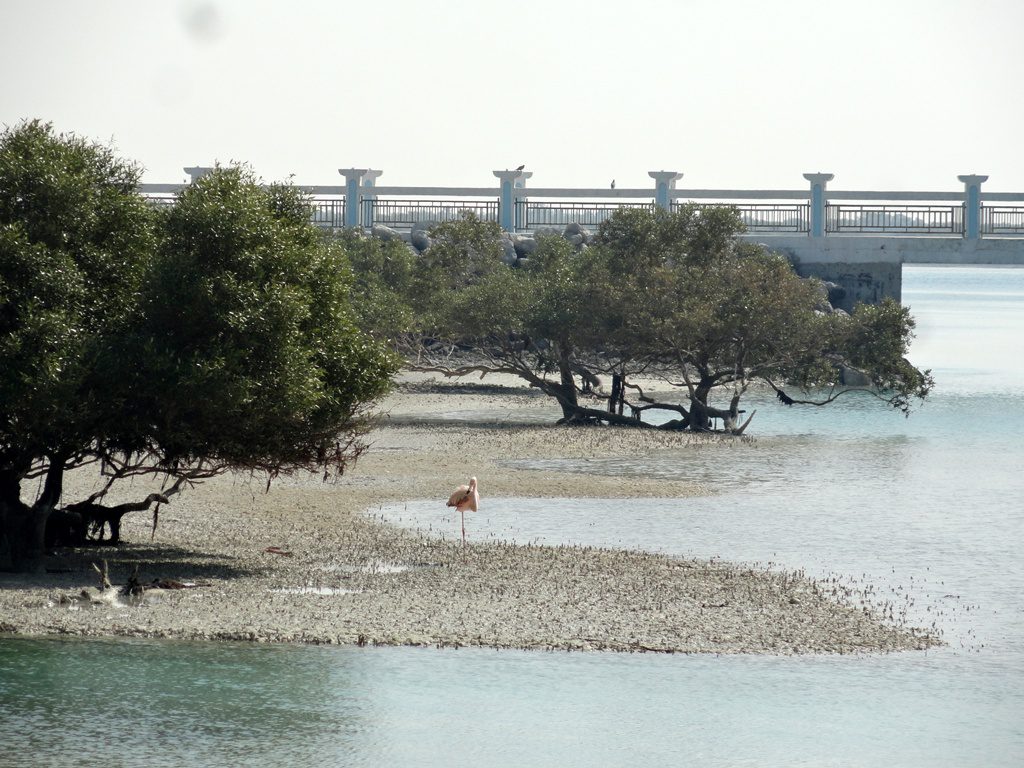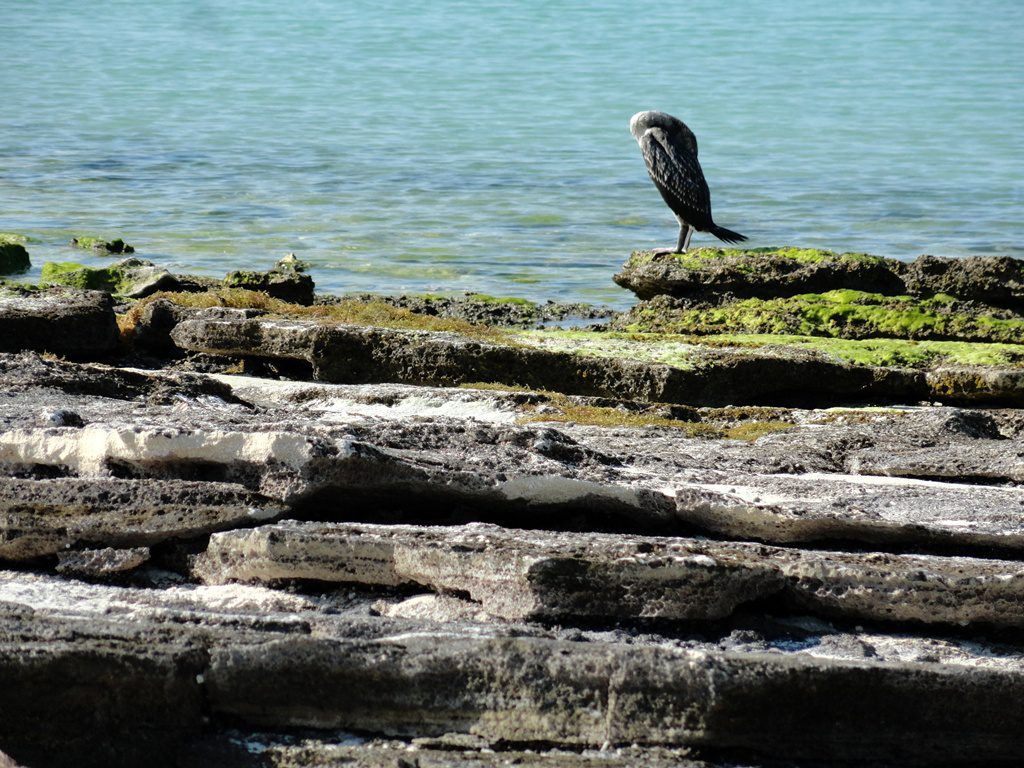by Trevor Jones, Remote Sensing Scientist, Madagascar
Lalao Aigrette, fellow BV Blue Forests colleague, and I recently spent a fascinating two weeks in the western coast of the Arabian Gulf. We were participating in the initial research of the Abu Dhabi Blue Carbon Demonstration Project (ADBCDP), a project of Environment Abu Dhabi (EAD) that aims to demonstrate the value of blue carbon habitats in sequestering CO2.¹
The ADBCDP is part of the UNEP/GEF Blue Forests Project and the Global UNEP Blue Carbon Mangrove Program. This first part of the ADBCDP involved three weeks in the field to assess the status and carbon stocks of blue carbon habitats, such as mangroves, salt marshes and “sabkah”². Given the unusually difficult and harsh conditions typical of these extremely hot and hyper-saline areas, the presence of mangrove ecosystems is truly a testament to their versatility and hardiness, specifically Avicennia marina. Also, this harsh yet intriguing and beautiful mosaic of coastal marine habitats clearly provides critical habitat for an impressively diverse range of wildlife.
Beyond an unprecedented opportunity for an extensive overview of the UAE coast, our participation gave us an exceptional chance to work and share our experiences with leading experts in wetland ecology and carbon measurements, including Dr. J. Boone Kauffman from Oregon State University, Dr. Stephen Crooks of Environmental Futures Ltd. and Dr. Pat Megonigal and his team from the Smithsonian Environmental Research Centre (SERC). Dr. Kauffman is the co-author of Protocols for the measurement, monitoring and reporting of structure, biomass and carbon stocks in mangrove forests, which is widely accepted as the standard text on mangrove carbon stock assessments and now forms the basis of designing carbon assessments in mangroves throughout much of the tropics.
What’s more, Drs Kauffman, Crooks and Megonigal are all co-authors on a VCS methodology currently under development for conservation of intact wetlands. Their expertise and shared experiences could not be more pertinent to our Blue Forests work in Madagascar.
While participating in the ADBCDP, we were also fortunate enough to work closely with representatives from Forest Trends, GRID-Arendal, the government-led Blue Carbon initiative in Indonesia, and numerous volunteers and expert staff from or associated with EAD.
Based on everyone’s hard work, this initial component of the ADBCDP was successful in providing the data needed to calculate baseline carbon assessments for mangroves, salt marshes and “sabkah” habitats. There will be a follow up campaign for seagrass ecosystems in April. Ongoing work by Forest Trends is also examining the ecosystem services associated with these “blue carbon” habitats.
In addition to carbon stocks and other ecosystem services, during the field campaign I had the opportunity to collaborate with representatives from the World Conservation Monitoring Centre (WCMC) in developing and beta testing an easy-to-use iPAD based application for assessing existing habitat maps and collecting the data necessary to develop updated, more accurate ones. In summary, the chance to work with an international group of blue carbon scientists was highly productive, informative and fruitful. While we have and continue to make significant progress with our Blue Forests project in Madagascar, we brought many important lessons from the UAE back to Madagascar, which will be used to make specific and important modifications that will help ensure our results meet as high a standard as possible. We also look forward to further collaborating with all the institutions represented during the ADBCDP.
On behalf of Blue Ventures, many thanks to our kind and gracious hosts and organizers – – GRID-Arendal and the EAD; and to all of our colleagues from ADBCDP!



